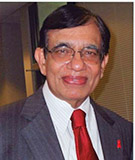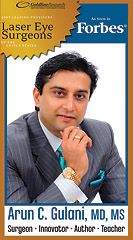
STRENGTHENING OF YOUR SELF-DEFENSE AGAINST DISEASES – Part IX Call 911 in an Emergency

Let me start with the tale of two patients who both suffered a heart attack but had a different outcome. The first one, a 73-year-old retired professor, used to suffer from acid indigestion that gave him occasional abdominal pain and heartburn, usually relieved by antacids. One day, he developed a little chest tightness that just wouldn’t go away. Not feeling better with antacids, he asked his wife to drive him to the doctor’s office. Sadly, he suffered a cardiac arrest while in the car and couldn’t be resuscitated. The second patient, also a male aged 65, suffered from high blood pressure and high cholesterol. When he developed similar symptoms, his wife decided to call 9-1-1 (nine one one) and was taken to the emergency room (ER) in an ambulance where after an initial evaluation, he underwent “primary coronary angioplasty and stenting,” thus averting any major complications. He went home after four days and has remained well since then.
Both are real life stories. One wonders if the tragedy of the first patient could have been averted had he dialed 911 when the symptoms hit him first. You have seen often enough ambulances rushing through the streets with their sirens blowing and lights flashing. They are transporting a critically ill patient to the nearest hospital ER or trying to get to a patient in need. The main reason we ask patients to call 911 is that the ambulance is fully equipped to handle emergencies and the crew well trained in advanced life support, so any catastrophic incidents like sudden cardio-respiratory arrest can be promptly treated. In addition, a lot of initial management like starting IV fluids, giving oxygen, initiating clot buster therapy for heart attacks and such can be done while patients are being transported. The crew is constantly in touch with the receiving ER, transmitting the patient’s vital signs, EKG recording, etc., and taking the necessary orders from them. In addition, the ER is preparing itself to receive the patient, so no time is wasted once the ambulance reaches the hospital parking lot.
Another patient who developed early symptoms of stroke was driven by his wife to the ER where he waited for almost an 1½ hours before being called for evaluation by the nurse, thus losing precious time for immediate intervention and ended up with significant residual paralysis.
Acute heart attacks and strokes can be lethal if not given proper emergency care. And the modern day care involves catheter-based interventions in which the blocked artery is cleaned and dilated or the offending clot is removed. Every year, more than 300,000 sudden deaths occur in the U.S. and many are “out of hospital cardiac arrests” occurring either at home, workplace or while being transported in a private vehicle to the ER.
What medical emergencies deserve a 911 call?
Retrospective analysis of a case gone awry for not calling 911 is easy but we all have to try and do the best to assess if a given situation is life threatening or not, and make a quick decision. It would help to be aware of the early symptoms of heart attack and stroke, in the first place *. These include chest pressure (more than chest pain), feeling of suffocation, left shoulder discomfort, cold sweats, sudden shortness of breath, etc. To remember the early signs of stroke, neurologists have come up with the catchword ‘FAST’ that stands for Facial drooping, Arm weakness, Speech difficulty and Time to call 9-1-1. Needless to say emergencies like accidents, severe burns, drowning, etc., are no-brainers – you must call 911.
The general rule is: “Dial 911 any time there’s a threat to life or property — such as an accident, a medical emergency, a crime or a fire or,” says Ty Wooten, director of Education for the National Emergency Number Association, also known as the 911 Association. A 911 operator can even tell you whether your problem merits a call to 911. If you even remotely suspect what you are experiencing could be an early warning of a heart attack or stroke, call. “That’s why we’re here,” says Wooten. “It’s better to be on the safe side.” It would also mean the difference between life and death.
(* For further reading: “Pay attention to early symptoms of heart attacks” by M P Ravindra Nathan MD – published in Hernando Today 2015: www.hernandotoday.com, also available on Google)
M.P. Ravindra Nathan, M.D., is a cardiologist and Emeritus Editor of AAPI Journal. His book “Stories from My Heart” was recently released. (www.amazon.com or www.bn.com).
EYE CARE
KAMRA or KARMA?

As I return after teaching at our Eye Surgery Conference in Hawaii where we reviewed futuristic technologies for correcting reading vision, I was equally enamored by the folk tales during the Hawaiian Luau.
Therewith unfolded this New Year’s article where I would tie the very parallel between the undeniable law of the universe and our constant quest to conquer mother nature.
So, to live longer and long enough to cross the age of 45 years and need reading glasses is everybody’s Karma. To reach that age and not need reading glasses? Kamra!
Have you ever held a newspaper as far as your hands could reach and were still barely able to read? Congratulations! You are now part of the “Elite” club of people over 40.
In our previous article (KhaasBaat), I had reviewed presbyopia, a condition of our eyes when we end up needing reading glasses as we ‘mature” into our 40s and I had shared
various surgical options to correct that condition.
The newest technology to be FDA approved in the USA is a device called Kamra! It falls into a category of optical lenses (very much like miniature, modified contact lenses) that are placed in the cornea (the front, clear window of our eye). Based on their placement inside the cornea, they are classified as corneal “Inlays.”
The primary purpose of these devices is to improve near vision and reduce the need for reading glasses in older adults who have presbyopia.
Developed by a company called AcuFocus, the Kamra device is small in size (3.8 mm) and also thin (6 microns) and based on the PinHole camera principle wherein it has an outer opaque layer and a small central opening, thus extending the natural range of vision, making near objects appear clearer without much loss of distance vision. Therefore, you may need only one placed in your “non-dominant” eye.
Unlike contact lenses that you can insert and remove in your eyes by yourself, these Inlays need to be surgically placed in the cornea by first making a corneal flap (very much similar a Lasik flap) like a page of a book and then placing this lens it in that area and letting the flap close down on it. The procedure is usually painless and takes minutes to perform with numbing drops.
Since the surgical process is so similar to Lasik, it can even combined with Lasik surgery while correcting nearsightedness, farsightedness and/or astigmatism. ("off-label" application in the United States which means this combination is not FDA approved but can surely be performed based on individual patient needs).
Compared to so many new innovations in presbyopia correction, Kamra is relatively less invasive and even reversible to some extent. Additionally, even people with thin corneas can undergo the procedure (since there is no tissue removal in this surgery).
Given time, presbyopia happens to everyone. So if you have no other refractive errors (never wore glasses or contact lenses for anything else), you could be a candidate for this technology in one eye.
If you do need glasses or contacts to see, then you can have this procedure in combination at the same time as your Lasik surgery.
Like I had mentioned before in my previous column on presbyopia, it is important that you are not having any cataracts at the time of this surgery since if you did, you would then have your custom cataract surgery with special “reading” lens implants.
Additionally, as you age (Karma), you shall develop a cataract and your custom cataract surgery can still be performed with this Kamra already in place (remember, cataract is inside your eye and this device is in the cornea).
Ask your eye doctor for options as many more new innovations to correct presbyopia are in the pipeline.
Time will tell if Kamra indeed can overcome your Karma!
Arun C. Gulani, M.D., M.S., is director and chief surgeon of Gulani Vision Institute in Jacksonville. He can be reached at [email protected] or visit www.gulanivision.com